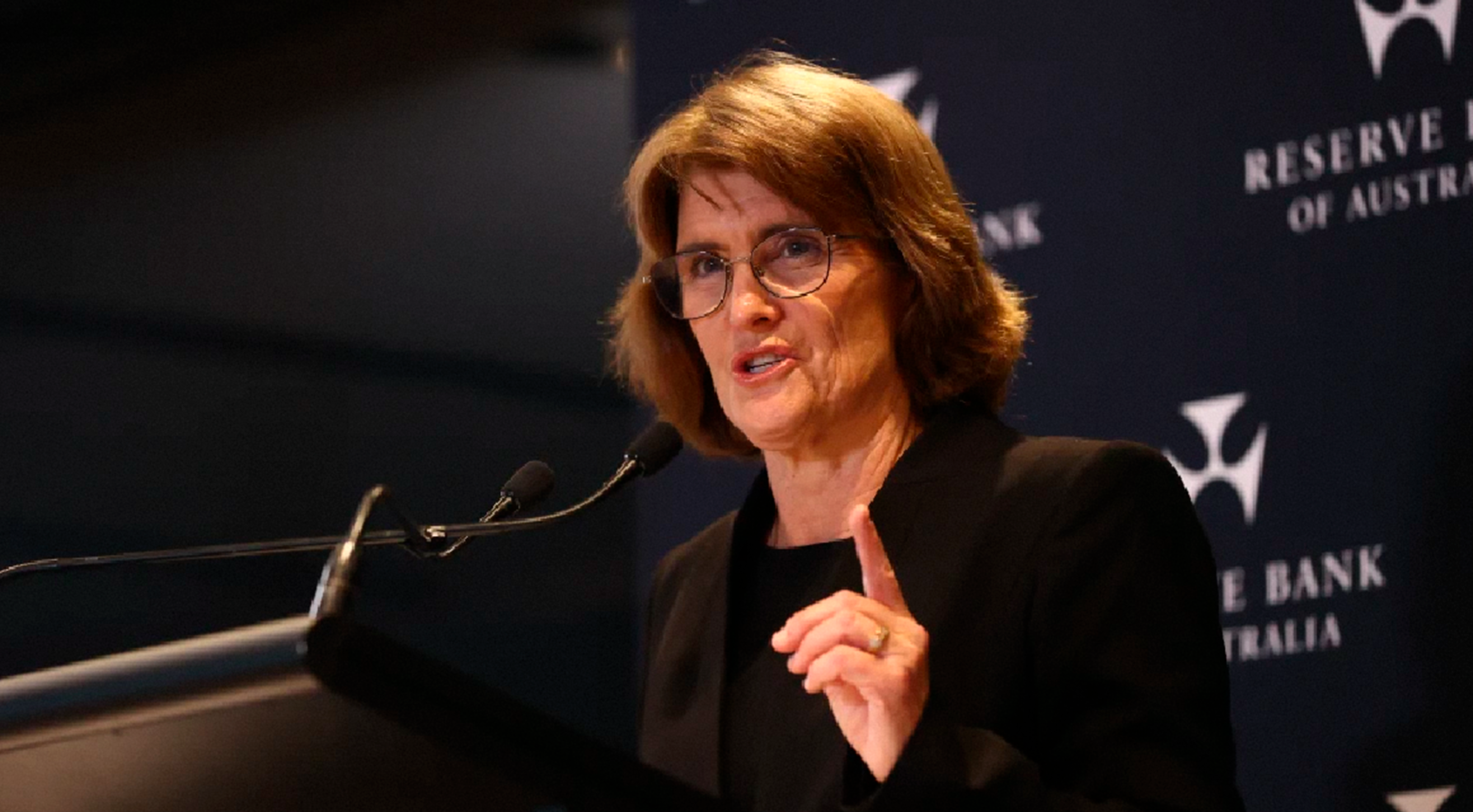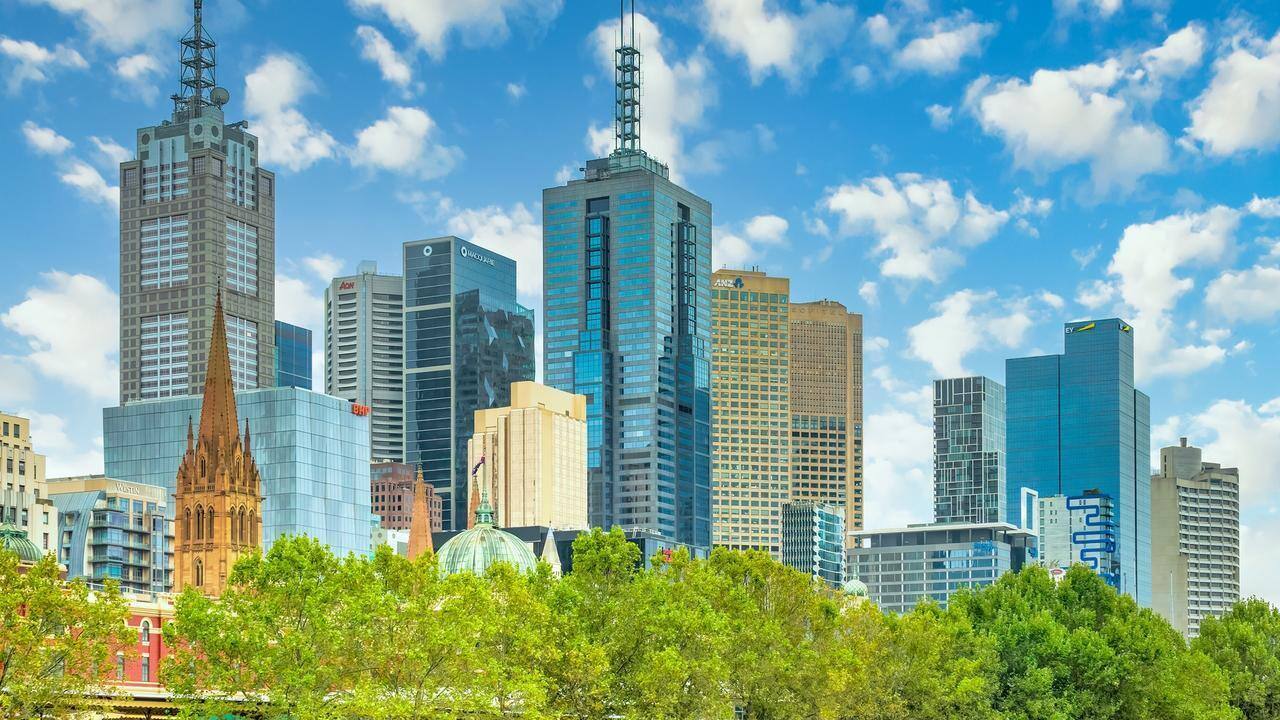Features > Property News & Insights > Housing Trends
No mortgage pain relief - RBA keeps rates on hold for 7th straight time

Image from Dominic Lorrimer/The Sydney Morning Herald
KEY POINTS
- RBA holds official cash rate at 4.35%, a 13-year high since November 2023
- According to the central bank, persistently high inflation is keeping rates steady
- PropTrack forecasts rising home prices despite high interest rates
The board of the Reserve Bank of Australia (RBA) has decided to keep the nation’s official cash rate at a 13-year high of 4.35% after its September meeting, giving no hint that it intends to cut interest rates anytime in the near future.
The decision to keep rates on hold was widely expected by economists and financial markets.
However, in her post-meeting press conference, RBA Governor Michele Bullock hinted that the board believes the current interest cycle has peaked, saying it did “not explicitly consider an interest rate rise” at its September meeting.
She was also clear that it was too early for the board to consider rate cuts.
“The board needs to be confident that inflation is moving sustainably towards the target before any decisions are made about a reduction in interest rates,” she said.
“We really need to see progress on underlying inflation coming back down toward the target.”
Inflation is still too high
In the statement accompanying its September decision, the Board of the Reserve Bank was clear, saying, “Inflation is still some way above the midpoint of the 2–3 percent target range.”
The RBA is mandated to return inflation, which peaked at 7.8% in December 2022, to that 2-3% range—a goal it’s promised to achieve by the end of next year.
The central bank has also made clear that it’s largely ignoring so-called “headline” inflation and concentrating on “underlying” inflation because it wants to look past the impact of government energy subsidies which have helped lower the headline measure.
“Headline inflation declined in July, as measured by the monthly CPI indicator,” the RBA said, pointing out that it is “expected to fall further temporarily, as a result of federal and state cost of living relief.”
“However, our current forecasts do not see inflation returning sustainably to target until 2026.”
“In year-ended terms, underlying inflation has been above the midpoint of the target for 11 consecutive quarters and has fallen very little over the past year.”
Unlike 3 of Australia’s big 4 major banks, HSBC Australia is not expecting any rate cuts until after March of next year.
Chief economist Paul Bloxham says the latest language from the RBA confirms his view.
“Today's statement really was clear about the focus that the RBA has on the fact that inflation is still too high.”
“They even pointed out that although headline inflation is likely to start to come down, the key focus needs to be on core inflation,” he says.
“The underlying rates of inflation are still well above where the RBA is comfortable.”
“They were also very clear about the fact that they're not ruling anything in or out, which is their way of signalling that they would consider potentially lifting their cash rate still again, even though obviously the rest of the central banks around… most of the developed world.. have started to cut them.”
Other developed nations are cutting rates. Why not the RBA?
When she was asked why the RBA was not cutting rates like other central banks, RBA Governor Michele Bullock offered this explanation.
“New Zealand, Canada, for example, are seeing quite sharp rises in their unemployment rates.”
“The United States is a little different as well….. it's seen inflation come… and some of those countries, too… are seeing inflation come down further than we are at the moment.”
“Their disinflation process is further advanced than ours is,” she said.
“The other point I would make is that most of those countries had official interest rates up over 5%.”
“We're restrictive (in terms of monetary policy slowing the economy), but we think they're more restrictive than us.”
What does this mean for housing?
Contrary to many gloom and doom predictions two years ago that home prices would “crash” if the official cash rate went above 4%, property prices have continued to increase nationally, although the picture is mixed around the country.
RBA Governor Michele Bullock referred to this in her post-decision press conference when she noted, "Housing prices continue to grow strongly because of the imbalance between strong demand and lack of new housing supply.”
PropTrack Senior Economist Eleanor Creagh remains bullish about the outlook for property.
“Home prices are expected to rise in the period ahead as activity ramps up into the spring selling season,” she says.
“However, the expected uplift in choice, the uncertainty around the timing of interest rate cuts and affordability constraints are likely to reduce the pace of price growth.”
Tim Lawless, Research Director at CoreLogic Asia Pacific, also describes the RBA decision to hold rates steady as “a positive outcome”, as it “implies the RBA is satisfied with the gradual downward trajectory of inflation.”
He believes the decision to keep rates on hold could “provide a boost to consumer sentiment, as more households firm up their opinion that rate hikes are over and the next move from the RBA will be a downward one.”
I agree.
Property buyers have factored into their calculations that the Reserve Bank is not cutting interest rates anytime soon.
And as the RBA Governor herself points out, the bottom line is there’s a housing shortage in Australia and people who are desperate to buy a property will do anything to get into the market.
Stay Up to Date
with the Latest Australian Property News, Insights & Education.




.png?width=292&height=292&name=Copy%20Link%20(1).png)
 SIGN UP FOR FREE NEWSLETTER
SIGN UP FOR FREE NEWSLETTER








.jpg?width=1920&height=1080&name=Warning%2c%20You%20Might%20Be%20Facing%20Higher%20Taxes%20Soon%20(1).jpg)





.png?width=1920&height=1080&name=Rate%20Drops%20Signal%20BIGGEST%20Property%20Boom%20in%20DECADES%20(1).png)

.jpg?width=1920&height=1080&name=Labor%20vs%20Liberal%20These%20Housing%20Policies%20Could%20Change%20the%20Property%20Market%20Forever%20(1).jpg)
.jpg?width=1920&height=1080&name=QLD%20Slashes%20Stamp%20Duty%20Big%20News%20for%20Investors%20%26%20Home%20Buyers%20(1).jpg)
.jpg?width=1920&height=1080&name=Trump%20Just%20Slapped%20Tariffs%20%E2%80%93%20Here%E2%80%99s%20What%20It%20Means%20for%20Australia%20(1).jpg)
.jpg?width=1920&height=1080&name=Federal%20Budget%202025%20More%20Debt%2c%20No%20Housing%20%E2%80%93%20Here%E2%80%99s%20What%20You%20Need%20to%20Know%20(1).jpg)
.jpg?width=1920&height=1080&name=Australias%20Housing%20Crisis%20is%20about%20to%20get%20MUCH%20Worse%20(New%20Data%20Warns).jpg)
%20(1).jpg?width=1920&height=1080&name=Australias%20RENTAL%20CRISIS%20Hits%20ROCK%20BOTTOM!%20(2025%20Update)%20(1).jpg)
%20(1).png?width=1920&height=1080&name=Is%20Adelaide%20Still%20a%20Good%20Property%20Investment%20(2025%20UPDATE)%20(1).png)
.jpg?width=1920&height=1080&name=RBA%20Shocks%20with%20Rate%20Cuts!%20What%E2%80%99s%20Next%20for%20Property%20Investors%20(1).jpg)
%20(1).jpg?width=1920&height=1080&name=I%20Predict%20The%20Feb%20Rate%20Cut%20(My%20Price%20Growth%20Prediction)%20(1).jpg)
.png?width=1920&height=1080&name=Why%20Property%20Prices%20Will%20Rise%20in%202025%20Market%20Predictions%20(1).png)
.jpg?width=1920&height=1080&name=Why%20Investors%20Are%20Choosing%20Apartments%20Over%20Houses%202%20(1).jpg)
.jpg?width=1920&height=1080&name=Why%20Rate%20Cuts%20Will%20Trigger%20A%20Property%20Boom%20(1).jpg)
.jpg?width=1920&height=1080&name=Retire%20On%202Million%20With%20One%20Property%20(Using%20SMSF).jpg)
.jpg?width=1920&height=1080&name=4%20Reasons%20Why%20You%20Should%20Invest%20in%20Melbourne%20Now%20(1).jpg)
%20(1).jpg?width=1920&height=1080&name=Old%20Property%20vs%20New%20Property%20(Facts%20and%20Figures%20Revealed)%20(1).jpg)
%20(1).jpg?width=1920&height=1080&name=Will%20The%20New%20QLD%20Govt%20Create%20a%20Property%20Boom%20or%20Bust%20(My%20Prediction)%20(1).jpg)
%20Scott%20Kuru%20(1).jpg?width=1920&height=1080&name=Inflation%20Hits%20Three-Year%20Low%20(Will%20RBA%20Cut%20Rates%20Soon)%20Scott%20Kuru%20(1).jpg)
.jpg?width=1920&height=1080&name=How%20to%20Buy%20Investment%20Property%20Through%20SMSF_%20The%20Ultimate%20Guide%20(1).jpg)
.jpg?width=1920&height=1080&name=Victoria%20Slashes%20Stamp%20Duty%20Melbourne%20Set%20to%20Boom%20Scott%20Kuru%20(1).jpg)
.png?width=1571&height=861&name=Are%20Foreign%20Buyers%20Really%20Driving%20Up%20Australian%20Property%20Prices%20(1).png)
.jpg?width=1920&height=1080&name=The%20Single%20Factor%20That%20Predicts%20Property%20Growth%20Regions%20(1).jpg)
%20Scott%20Kuru%20(1).jpg?width=1920&height=1080&name=My%20Prediction%20On%20Rates%20%26%20Negative%20Gearing%20(Market%20Crash)%20Scott%20Kuru%20(1).jpg)

-1.png?width=1920&height=1080&name=Major%20Banks%20Cut%20Rates%20Will%20RBA%20Follow%20Suit%20(Sept%20Rate%20Update)-1.png)
%20Scott%20Kuru-1.png?width=1920&height=1080&name=Rate%20Cut%20Coming%20What%20New%20Zealands%20Move%20Means%20for%20Australia%20(Sept%20Prediction)%20Scott%20Kuru-1.png)
%20(1).jpg?width=1920&height=1080&name=Buy%20when%20the%20interest%20rates%20are%20high!%20(Why%20you%20must%20buy%20now!)%20(1).jpg)
.jpg?width=1920&height=1080&name=Carms_Revised%20Taxes%20Due%20Aug%209%20YT%20Thumbnail02%20(1).jpg)
.jpg?width=1920&height=1080&name=Carms_Too%20Little%20Too%20Late%20Aug%207%20YT%20Thumbnail01%20(1).jpg)









.jpg?width=1920&height=1080&name=Carms_Rate%20Drop%20In%20July%20Jun%2010%20YT%20Thumbnail02%20(1).jpg)
.jpg?width=1920&height=1080&name=Carms_Own%20a%20Property%20V6%20Jun%205_YT%20Thumbnail%20(1).jpg)









.png?width=1920&height=1080&name=Artboard%201%20(3).png)






.jpg?width=1920&height=1080&name=YT%20thumbnail%20%20(1).jpg)

